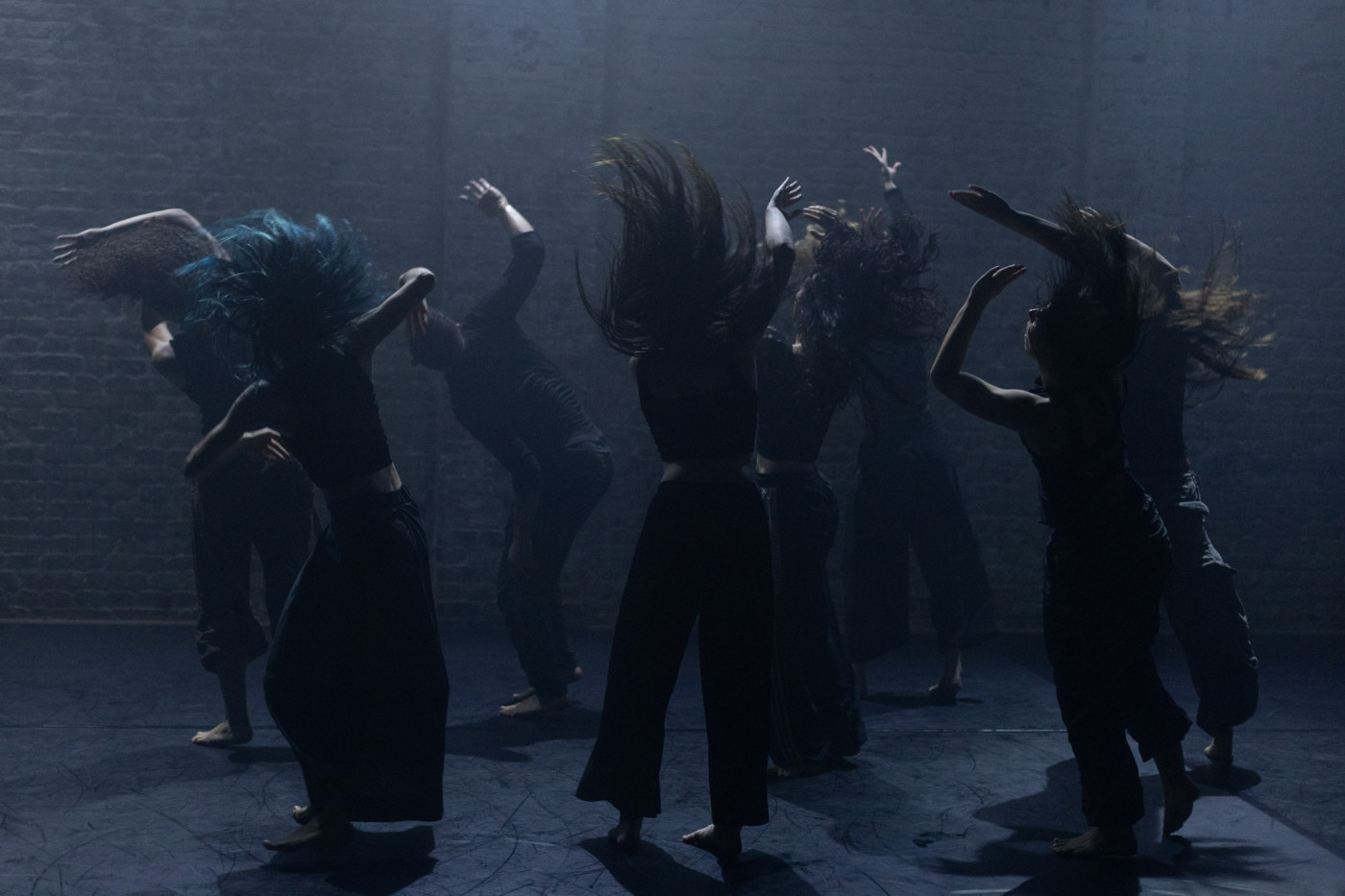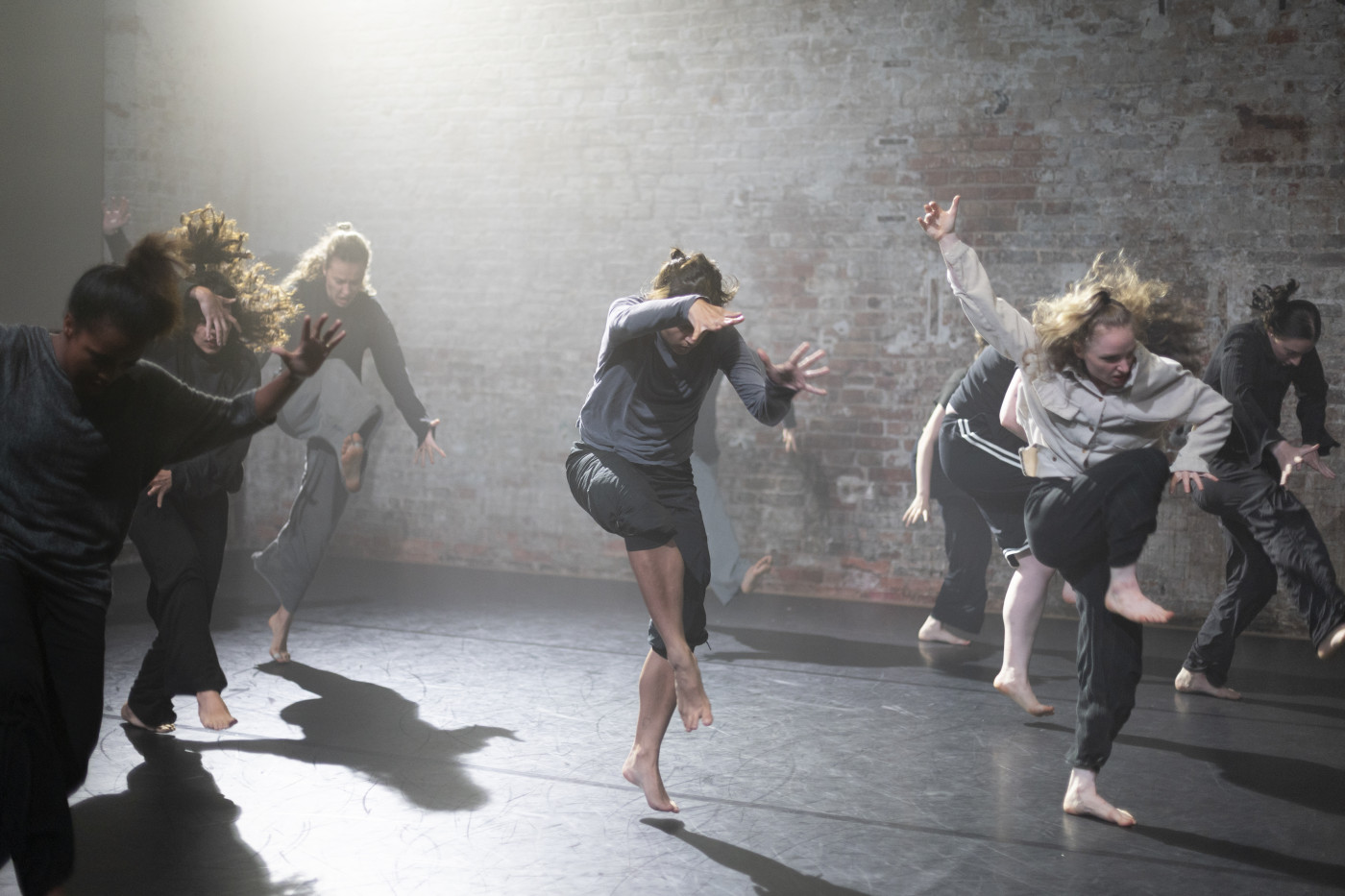
Between Studio and Stage — Poetics of Practice
Since its founding in 2015 by Johannes Wieland and Evangelos Poulinas, the b12 – festival for contemporary dance and performance art has become an important meeting point for the international dance community. Every summer, countless instructors and choreographers come together to share their knowledge and collaboratively explore new work with the many participants. A tightly packed program of workshops, performances, showings and discussion formats creates a platform that offers space and time for development to both professional dancers and emerging artists.
The festival motto Research or die succinctly captures a central dilemma of contemporary dance: artistic-choreographic research is indispensable, yet it is rarely taken seriously on a structural level. While research in other art forms is routinely funded, documented and acknowledged, dance is still viewed primarily as a practice of expression or representation rather than a form of knowledge. But in dance in particular, research takes place inside the body itself—as the emergence and transformation of movement, as a questioning of social and cultural norms that shape bodies, and of what traces they leave behind. Research in dance is therefore not a luxury extra but a necessity—both for the development of choreographic practice and for recognizing dance as an independent form of artistic and social reflection. b12 makes a clear statement: research is not an add-on but the core of choreographic work.
This understanding also shapes the festival’s structure. It intentionally creates spaces where research processes can remain visible, without having to result in marketable final products. Under the label “b12sungrazer,” selected teachers present finished or well-advanced pieces. In the festival’s final week, for instance, Lukas Malkowski teaches a workshop at eden***** studios that experiments with gravity, testing momentum techniques that transform falling into fluid floor and aerial movements. In the evening, he presents his deeply personal solo, “Microphone Controller” in the hall of DOCK ART:
As soon as the house lights fade, a silent concert clip of Ozzy Osbourne (R.I.P.) flickers across the back wall. Subtitles describe the soundscape: “(Electric guitar screaming),” “(Audience cheering).” From the start, Malkowski—himself a CODA, a hearing child of Deaf parents—poses questions about perception, accessibility and the power of the voice. What does it mean to experience sound as text or vibration? How does music feel when hearing is not an option?
The 50-minute performance is both dance solo and sensory rock concert. Bright, flickering lights, deep basses that can be felt through the seats, and dense subtitling guide the audience through a flood of simultaneous sensory impressions. Malkowski blends loudly sung refrains, spoken-word passages, and signed monologues—sometimes in DGS (German Sign Language), sometimes in ASL (American Sign Language)—into a polyphonic self-portrait. Pop icons such as Prince, Freddie Mercury, David Bowie, Nina Simone and Sinéad O’Connor flash up like ghostly figures, invoking the right to raise one's own voice – whether phonetically or visually.
Private video clips show the dancer and choreographer as a child, accompanied by his father's advice in sign language: “You don’t need a microphone. We can sign.” This marks the conflict: must he choose between the hearing world and the Deaf’s world? The microphone, initially the centerpiece of his rock-star alter ego, is eventually pushed aside. In the end, he sings and signs “Forever Young” – with his back to the audience, almost to himself, while the bass continues to physically pulse through the rows of seats.
Spoken German, English lyrics, DGS, and ASL overlap, sometimes slightly out of sync. These disruptions reveal how language is always tied to both the body and to convention.
“Microphone Controller” is a multilayered experiment that subverts stereotypes around Deafness, voice and pop culture. The piece treats participation as a sensory event and challenges the audience to question their own hearing—and non-hearing.
In contrast, “b12asteroids” presents shorter works jointly developed with participants during the workshop days. “asteroids” is therefore not a traditional stage format, but rather an experimental space that blurs the line between studio and stage. The works that emerge here are open, sometimes fragile and unfinished compositions – snapshots of an ongoing research process.
“The showing is only one part of the process,” emphasizes Johannes Wieland. “The appeal lies in the interweaving of workshop and performance: we put something on stage and participants see how the tools developed in the studio take effect—what was experienced and learned there and how it is artistically implemented. It’s precisely this feedback that creates the connection we’re interested in. Artistic research has been our central theme from the beginning—and it still is, because in dance there is always a shortage of time for it. With the workshops we wanted to create a framework that provides exactly that time.”
This entanglement of workshop and showing acts as a catalyst: within a few days, varied bodily biographies, languages and working methods meet. Coherence is not forced; what matters are the constellations that arise. Many artists travel from all over the world, bringing their own practices and understandings of the body. This heterogeneity is both challenge and potential: a coherent work does not always emerge, but that is precisely where the quality of the “asteroids” pieces lies. It’s less about presenting a polished product and more about making development visible.
One example is the joint evening by Sebastian Zuber, Lali Ayguadé and Maura Morales. In Morales’s performance, the collaboration culminated in a liberating water battle: dancers wrapped themselves in clear plastic, freed themselves from it, slid across a soaked stage floor, water splashed everywhere, turning the studio into a shimmering paddling pool where vulnerability wrestled with new beginnings.
This format clearly distinguishes itself from typical festival concepts that prioritize presentation and representation. Here, the fragile artistic-choreographic process remains perceptible until the end and opens up a space in which movement—both literally and figuratively—can truly take place.
Jette Büchsenschütz, Berlin, 07/08/2025

By playing this video, you accept Vimeo´s privacy policy. Read more in our privacy policy and at https://vimeo.com/privacy.
